In almost 90 years, the Tennessee Valley Authority’s mission has been unwavering – Improving the lives of the people of the Tennessee Valley. Evolving to meet the challenges of 21st Century, the largest public power utility in America uses its clean electricity generation as a strategic asset to drive economic growth across seven southern states. Ned Dawson visited Muscle Shoals, Alabama to find out more about how the Authority has integrated aviation into its operations.
Originally formed in 1933 by Act of Congress, during the height of the Great Depression, the Tennessee Valley Authority, or TVA, became a beacon of hope for one of the poorest regions in America. As a federally owned corporation, TVA covers a huge 80,000 square-mile area around the entire watershed of the Tennessee River, servicing most of Tennessee, portions of Alabama, Mississippi, and Kentucky, and small areas of Georgia, North Carolina, and Virginia.
The agency’s mission of improving the lives of the people of the Tennessee Valley has remained unchanged. Today, TVA breaks that mission into the three E’s - energy, economic development, and environmental stewardship. TVA manages 293,000 acres of federal lands for public access, recreation and wildlife management as well as 11,000 miles of shoreline. It is responsible for protecting threatened and endangered species and thousands of cultural sites as well as providing clean air and water quality for the people of the Valley.
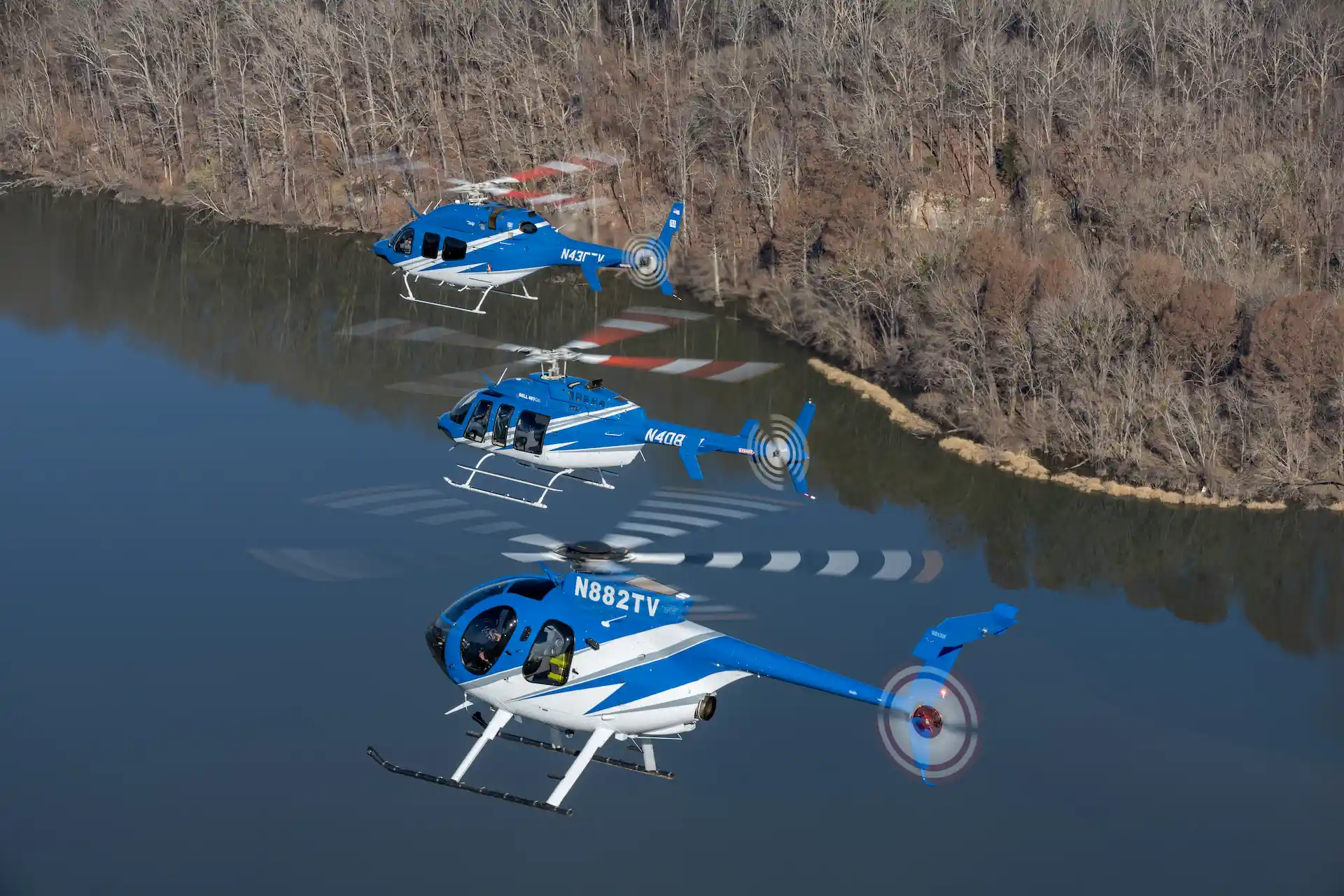
TVA’s Evolving Aviation
The organizational structure includes a three-part aviation division that was first formed with military surplus biplanes just three years after the Authority’s inception, and expanded into helicopter operations during the 1950s. The original TVA hangar at Muscle Shoals was built in 1938 on the then grass aerodrome and the helicopter section now operates a fleet of ten helicopters; three Bell 429s, three Bell 407s and four McDonnell Douglas Helicopters MD530s. One machine is based in Tupelo, Mississippi, in Tennessee one is in Nashville, two are in Knoxville, one is in Chattanooga and one is based in Muscle Shoals alongside the headquarters and maintenance hangar.
“From the rugged Appalachian Mountains to the flat Mississippi delta, Valley we have just under 17,000 miles of electrical transmission lines between 69kV and 500kV that we maintain,” advised Adam Hammond, TVA’s Manager, Helicopter Operations and Chief Pilot. “We’ve spread ourselves across the territory so we’re strategically located to respond quickly if there’s a major storm that comes through or an outage.”
Hammond explained that 90% of his team’s time is spent supporting transmission line work because aviation is one of the fastest and most cost-effective ways for line work. “I just have to make sure that I have two MDs and two pilots available for construction at all times, and the construction department will ascertain where they’re needed.” The fixed-wing division operates a pair of Cessna Citations for corporate and VIP transport, usually to industry and community meetings within the region, or to the corporation’s Washington DC headquarters. The latest department to be included in the aviation division is the drone unit, which predominantly inspects the interior of nuclear and coal-fired electricity generation plants, although its role is evolving and expanding as it is still a new component within Authority aviation.
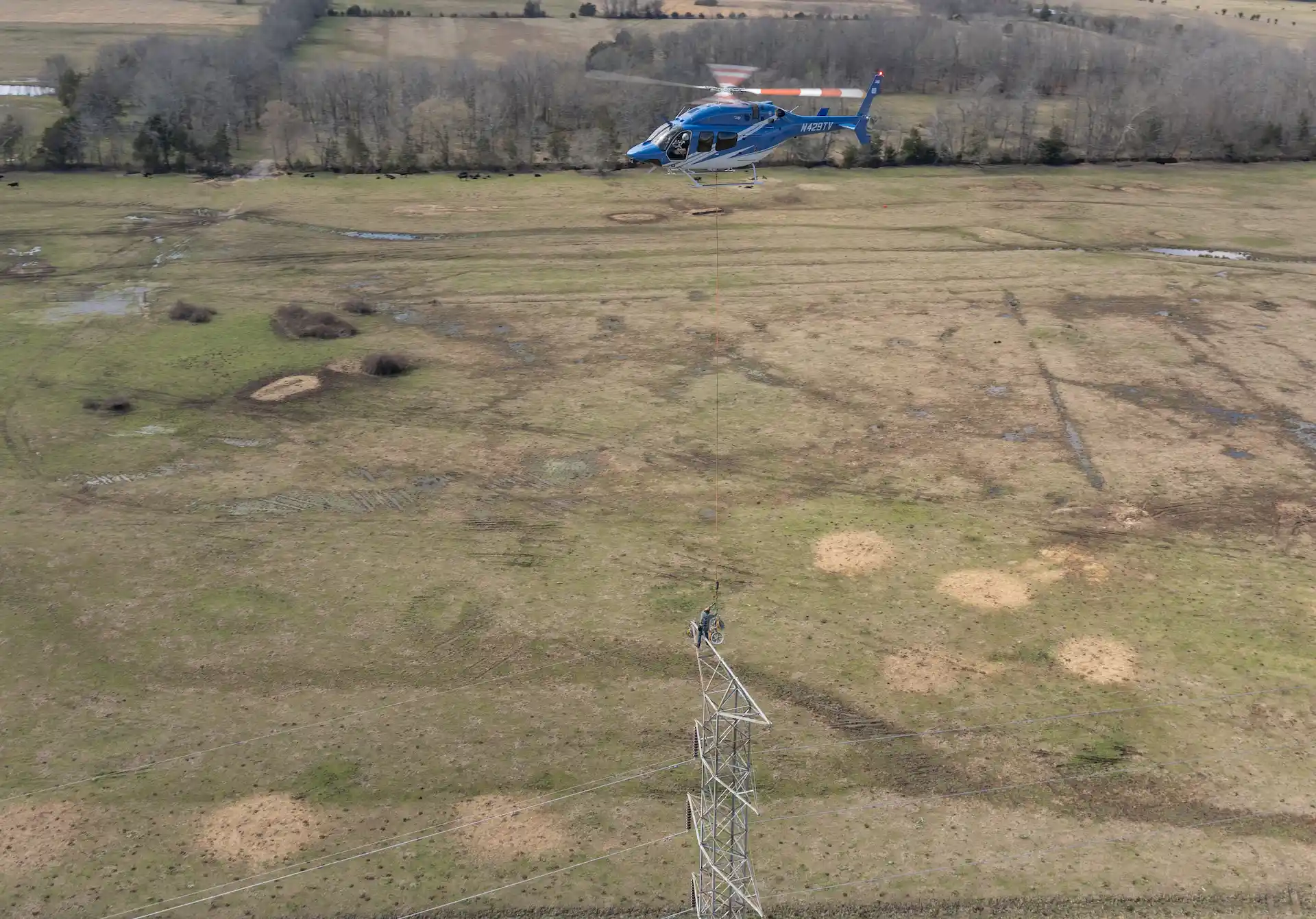
Fleet Rationalization
TVA’s aviation fleet underwent a major renewal and rationalization program in recent years, after an analysis of the rest of the industry and best practice revealed that the then-existing fleet was too diverse for the staff on hand and optimum maintenance, training and tooling. “As a result, we decided to standardize the fleet as much as possible and went from five different airframes made by three manufacturers, to three airframes from two manufacturers,” Hammond elaborated. “Not only does that allow us to be cheaper and more cost effective in our operation, it also adds that extra level of safety that standardization provides.” According to Hammond, going to glass cockpits on all three helicopter types also aided standardization. “In machines like the MD and the 407, having one screen with all the information right there is great for the pilot, and so much better than having to scan nine different instruments.”
All the TVA Bell aircraft are IFR and autopilot equipped, as a review of industry helicopter crashes revealed that most accidents are due to either CFIT (controlled flight into terrain) or inadvertent flight into IMC. “Our entire helicopter fleet is equipped with either the RMCI or GPMS helicopter HUMS (health and usage monitoring system), which is constantly monitoring every moving part of that aircraft whenever it running. That allows our maintenance program to be proactive instead of reactive. It’s been proved that these HUMS systems can predict chip lights 100hrs out, so we can fix things right away, rather than waiting for a chip light and possibly having more issues and up to three months out of the air while the engine is rebuilt,” Hammond advised. Rotor track and balance data from the system also enables vastly increased efficiency in maintaining optimum blade tracking and balancing, eliminating the need for multiple test flights. Factors related to any exceedance in flight manoeuvring or power management can be subsequently investigated by maintenance personnel and the system tends to increase safety and pilot professionalism overall, as the natural human reaction to being monitored is to maximize performance and accuracy. “We don’t sit there and monitor each flight, or look for pilot errors,” commented the Director of Maintenance, “But if something does happen, this gives us the tools to look at multiple different data and information points to get an accurate picture of exactly what happened.” He echoed Hammonds remarks that to a much greater degree, the HUMS enables maintenance to be planned rather than urgent and unscheduled.
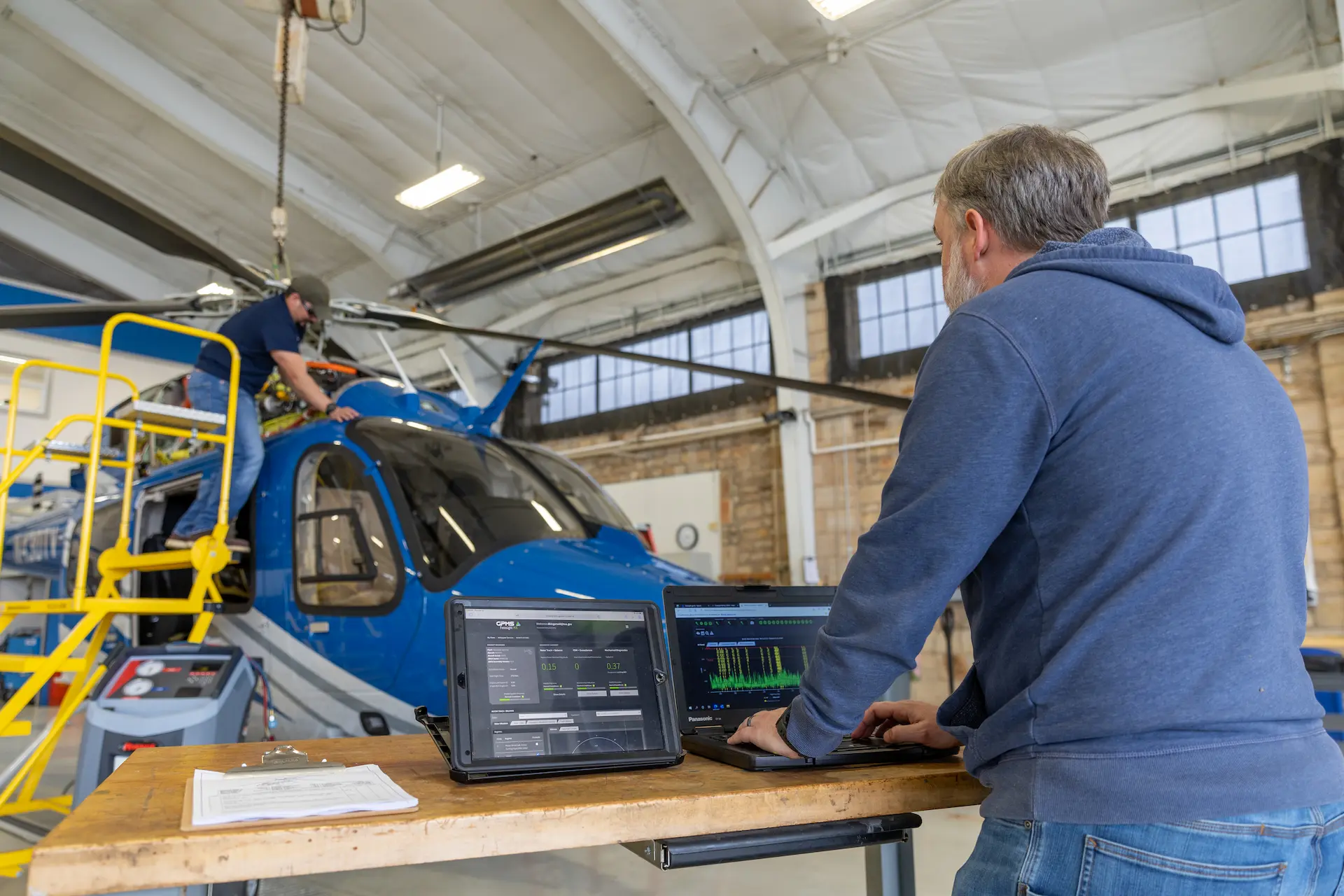
The need for three different airframes is dictated by the varied missions. The 429 is a great utility platform, routinely used to carry out patrols and infrared inspections or external load missions in support of powerline construction and maintenance. It also offers genuine fly-away capability on one engine in every task the TVA uses it for. The MD530F first entered the fleet in 2009 and excels in the construction and maintenance roles due to its unparalleled ability to hover close to powerlines, small footprint and high power-to-weight. Efficiency is a major advantage of helicopter transfer of linemen, with Hammond reporting that a 530F can service linemen onto towers four times as fast as crews working from the ground. Typical 530 missions include transferring linemen to towers, pulling rope for new line construction, or mid-span or tower platform work, such as installing spacers. The fleet grew to the current four examples over subsequent years, gradually taking over the mission from outside contracted providers and expanding capability as an in-house team of dedicated helicopter senior linemen was trained to work from the aircraft. Close-in line work can call for extended periods of intense concentration by the pilot as, while some jobs may only take three or four minutes, work such as mid-span full-tension splicing can require hovering on station for anything up to 45 minutes and a good working knowledge of the linemen’s methods and procedures simplifies the job, minimizing the need to communicate every move.
“Our linemen are top-notch, very professional, salt-of-the-earth people that enjoy their job and it makes going to work every day very enjoyable for us,” Hammond commented, explaining that having dedicated linemen makes the job both easier and safer, with pilots and linemen each speaking each other’s language and the linemen understanding the intricacies of such things as aircraft CoG, and how to move to and from the aircraft and platform slowly and evenly to ease the weight transfer. Their thorough knowledge of helicopter operations also makes them ideally suited to establish ground support and landing sites for the aircraft when moving to new locations. TVA helicopters do not conduct HEC (human external cargo) operations as the risk factor under the single-engine 530Fs is deemed unacceptable. Hammond noted, however, that there have been no instances where a mission could not be undertaken by conventional means, that would have been enabled by the use of HEC methods. If HEC procedures were to be instituted in the future, he stated that they would only be considered if using a twin-engine platform. The only advantage that HEC brings to an operation is that it can make things go a little faster and it removes most wind limitations, as the aircraft can always be operated nose into wind.
The Bell 407 is an excellent multi-mission aircraft that sits between the two other types and carries out the full range of missions, apart from economic development transport flights as it is a single-engine type. The 407s will soon be used on a new insulator washing program using an onboard ‘cannon’ to clean the insulator surfaces, as contamination on powerline insulators can cause arcing and power fluctuations. A highly regarded external operator is commencing training of TVA crews as this goes to publication. Hammond explained that there are large numbers of buzzards in the valley, especially in wet areas with numerous lakes, and the birds like to roost on the towers, soiling the insulators with their droppings.
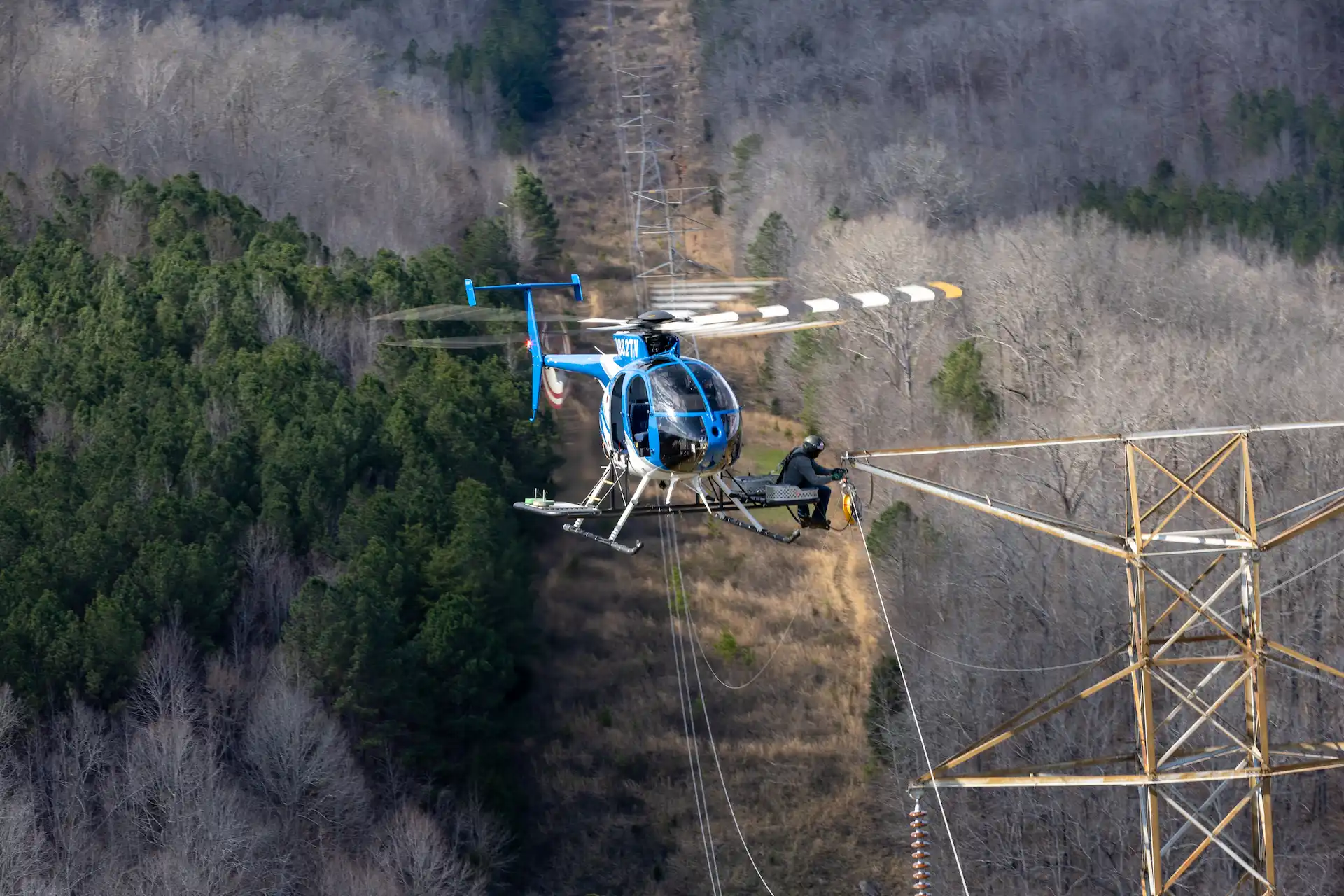
Advanced Training
Along with the fleet upgrades, TVA took the opportunity to raise the bar with regard to flight crew standards, and all pilots are now ATP certified and attend six-monthly simulator training, with annual human factors and professional development training. In-flight tracking of the helicopter fleet is provided by the BlueSky tracking network and the entire air division operation is set up to FAA approval standards because, even though it operates in the public use category as a federal agency, it follows industry best practice to ensure the highest safety and operational standards.
The air unit has not specified any wind limitation in its operations manuals as the powerline work generally involves maintaining position close-in and parallel to the line, maximising distance from the line for both main and tail rotor assemblies. Wind limits are therefore dependant on wind speed, wind direction, the specific task being undertaken and the individual pilot’s experience level, with Hammond remarking, “All of our construction pilots have around 5,000 hours or more of utility experience and I trust every one of them to conscientiously make the right call when conditions approach his limit to safely continue operation.” Minimum requirements for employment as a TVA pilot are 2,500hrs total, 1,000hrs turbine time and preferably 1,000hrs of utility experience. Because the TVA is a federal organisation, being a military veteran also gives bonus points towards employment qualification. “The problem I’m seeing right now though, is that there are just not that many helicopter pilots out there, and there are even fewer utility pilots,” Hamond observed. “To illustrate, when I hired on six years ago, I was one of 43 applicants. When Ryan hired on a year ago, he was one of only three applicants.”
While powerlines are generally considered a major hazard to low-level aviation, the hazard to aircraft is primarily from unknown wire locations. As Hammond pointed out however, during powerline work the location of the spans and towers is a known quantity, greatly reducing risk of wire collision. The risk is somewhat greater during patrol than in construction operations as patrols are carried out at 40kts. For that reason, a lineman familiar with the infrastructure of that particular area flies in the left front seat during patrol missions to enhance situational awareness and increase aircraft safety. An additional in-flight safety procedure is to ensure that the aircraft maintains a height above the static wire, so that if an unseen tap branches off, it will pass harmlessly underneath the aircraft. As a last line of defence, all TVA helicopters are equipped with wire cutters. If a particular tower has no safe ‘out’ in the event of an engine failure or aircraft problem, the air unit will decline to fly that tower and the linemen will climb it from the ground to carry out their tasks. Line crews drive to any new location to arrive before the helicopters, establishing suitable work areas and a safe landing zone that satisfies the safety and performance requirements of the helicopter. The aviation division helicopters do not work on energized lines, only on de-energized lines that are shut down for scheduled outages or from unscheduled failures and faults. Nevertheless, bonding is a crucial part of powerline operations, as even de-energized lines and towers carry substantial residual or induced voltages.
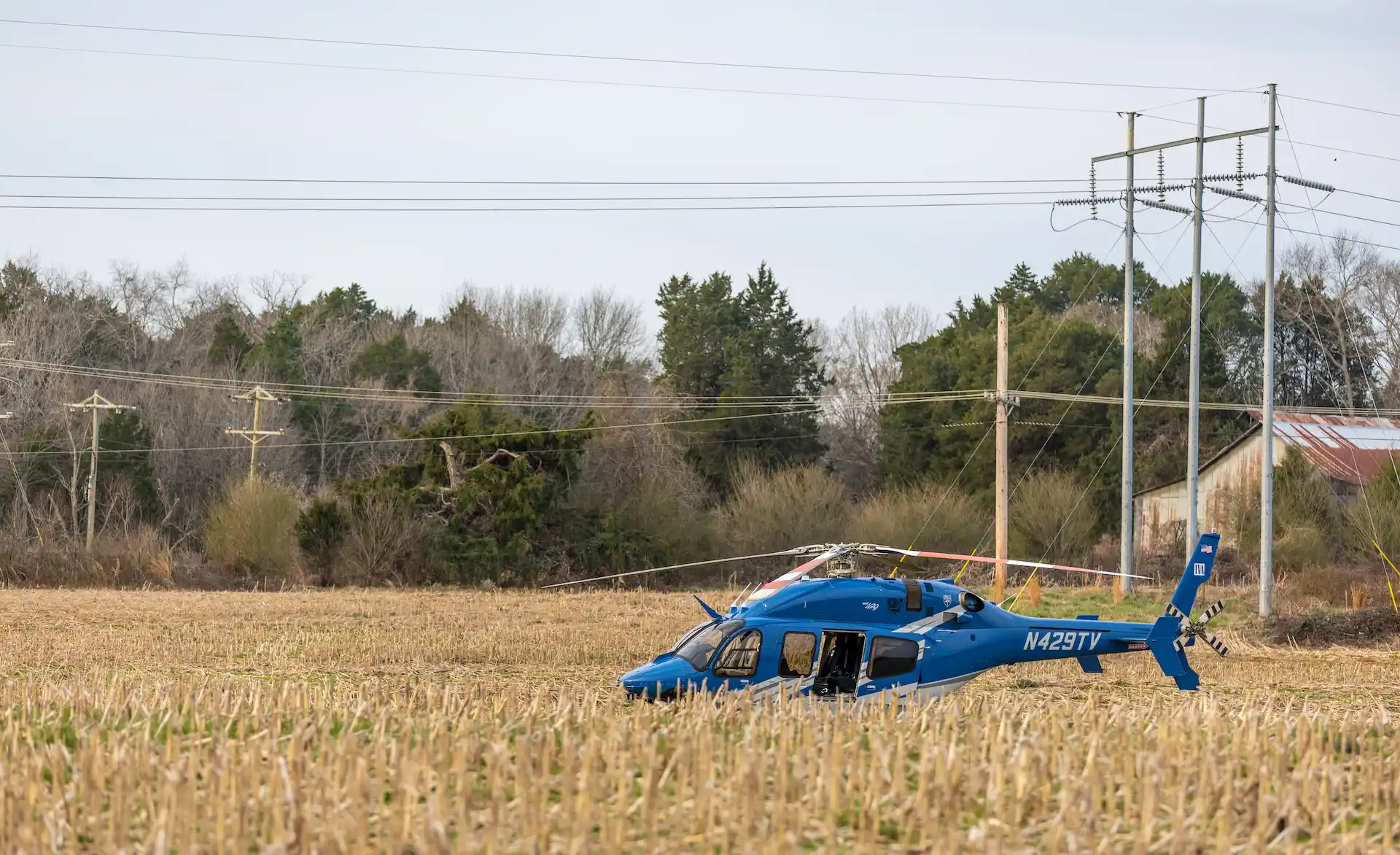
When Time Matters
Hammond pointed out that within the last two years, the TVA aviation team had been instrumental in restoring power to communities affected by three severe tornados, in Nashville, Chattanooga and around Mayfield, Kentucky. “They cut the power to many, many customers and the aviation team worked around the clock with the linemen so that we were able to restore power to all those customers within a week,” he reported.
The Mayfield tornado that occurred in mid-December affected 254,000 consumers, damaging or destroying 100 TVA power structures and 31 transmission lines. The restoration was a massive undertaking that involved all the 429s and 530s. Within a week power had been restored to about 237,000 of them. “It was still really bad weather over most of the Valley after the tornado and without the 429’s IFR capability we wouldn’t have been able to get everyone up there for at least another two days,” Hammond observed.
Aviation’s Critical Role
The flight department is busy, flying around 2,700 hours each year with its ten aircraft, Hammond and five other pilots. Two pilots came from a military background and the other three are civil-trained. Pilot fatigue concerns limit daily flight time to six hours per day, but Hammond advised that the active machines fly six hours each day throughout the year, describing typical pilot duties, “A typical construction pilot will work eleven days straight and then have three days off. Then he’ll do line patrols for a week followed by a week on standby for emergency patrols, economic development missions or outages. We try to keep people within an area of responsibility to minimize travelling, but they get a chance to fly all the mission types we do.” Having more machines than pilots puts the unit in the enviable position where a pilot can drop a machine in for a maintenance check and jump straight into another aircraft to continue working, leaving the maintenance personnel plenty of time to conduct thorough inspection and maintenance on the out-of-service machine. Hammond stated that he wanted to ensure that the unit was always flying pristine, airworthy aircraft. “We don’t want the maintainers to have any perception of being rushed, as that’s when things can get missed or go awry.” The maintenance crew consists of a Director of Maintenance and five maintenance technicians and the number of available aircraft permits them a normal working week of Monday to Friday, 7am to 4pm, although they will stay late or work weekends if required for urgent work to restore a machine to the air. The maintenance director reported that tech support and field support was good from both Bell and MD, although with such new machines there had been little need for urgent response to AOG (aircraft on the ground) issues.
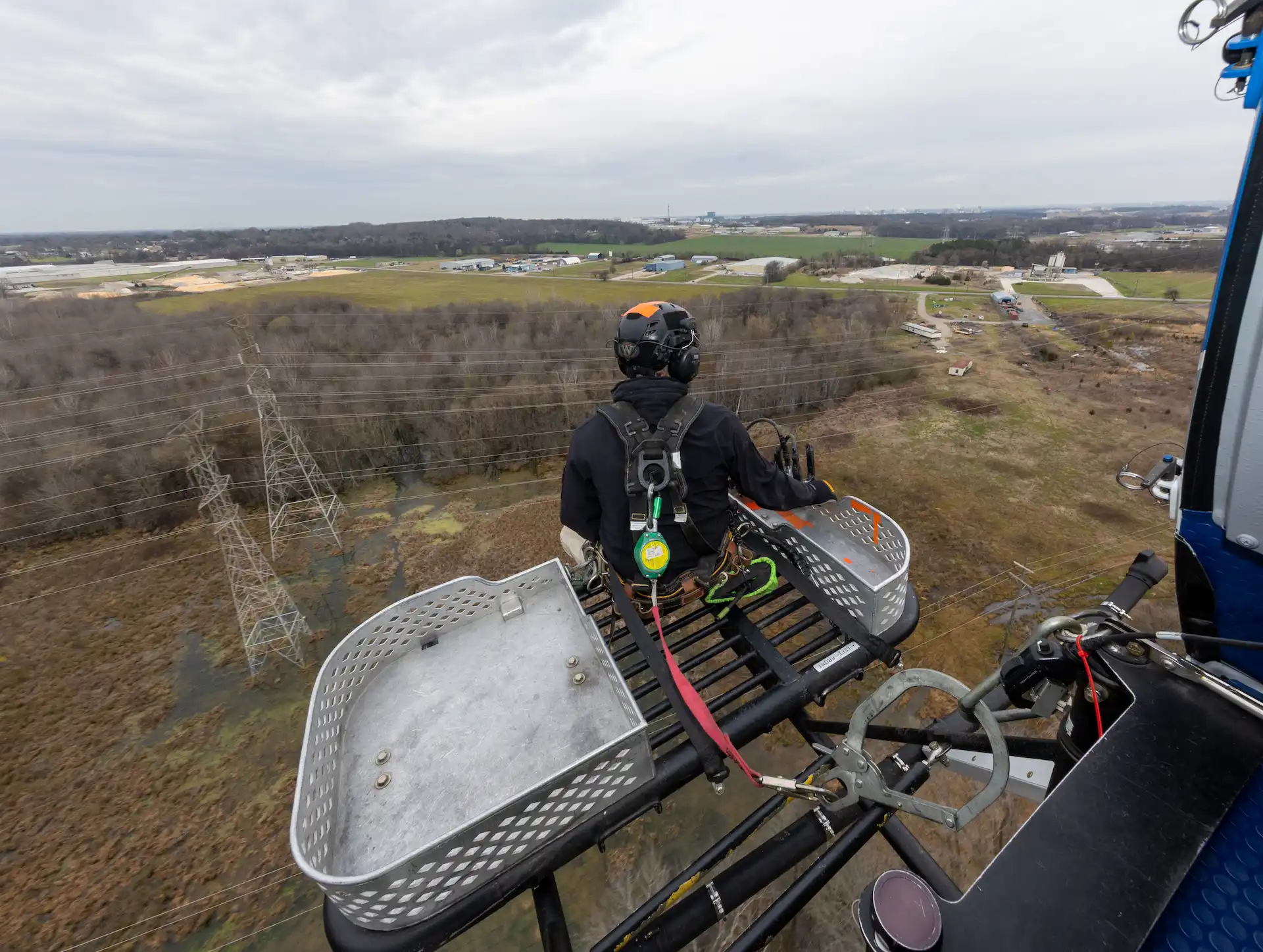
The 530s are currently heavily involved and on schedule, three years into the TVA’s strategic fibre initiative, a ten-year plan to install around 3,800 miles of fibre-optic line to enable broadband internet access throughout the valley. Helicopter crews come in and unclip the existing static wires, ground crews pull out those lines and install the new fibre wire, the helicopter crews then come in and clip in the new line. Not only do the helicopters increase efficiency, they also have a positive environmental impact, minimizing the level of ground traffic so that far fewer trucks are driving the line routes, potentially ripping up the ground and damaging flora. As good as the MD530F is in its role, Hammond admitted that the power industry worldwide was heading towards a twin-engine only operational model and stated that provided the helicopter manufacturers supported a suitable platform, the TVA would certainly be interested in pursuing twin-engine options in the future for all its work, every aspect of which the 429 has proved capable of conducting safely and effectively.
Aside from its wide range of powerline support missions, the Bell 429 is an ideal platform for the transport of executives, where twin engines, two pilots and IFR capability are industry best practice. “One of our largest missions outside construction and distribution work is supporting TVA’s economic development team, who work closely with the development teams from each state. They will contact us, we’ll meet with them and fly around representatives from large corporations that are looking to relocate to the valley, helping them find suitable pieces of land. It’s a service we provide that helps create more jobs and sell more power,” said Hammond, who noted that the whole valley can be surveyed in a single day from one of the authority’s helicopters, rather than taking an entire week or more by ground transport. Construction and economic development top the aviation division’s order of mission precedence. He added that the aviation division was instrumental in maintaining TVA’s 99.999% electricity reliability record, which helps attract large business customers to the valley. Other TVA helicopter work comprises passenger transport, particularly for senior authority personnel when jets are unavailable. “Even though the energy, economic and environmental divisions each have their own particular area of focus, we all have the common goal of ensuring that anything we do is in the best interest of the people of the Tennessee Valley,” Hammond stressed.
Looking forward, although Hammond would like to see a fleet of exclusively twin-engine aircraft and greater IFR capability, due to the increased safety factor, he is certainly happy with the current state of the division, commenting, “Because TVA owns the infrastructure and the aviation assets, everything is conducted in-house and so things run more smoothly and efficiently. I like that we have a chain of command that supports us to do things the right way, not taking shortcuts, spending the money to be safe and have newer, standardized aircraft. Everyone here enjoys their job and we have good machines and a great work/life balance.” Such major corporations as Airbus, Ford Motor Company, Mazda, Toyota, Bell Helicopter and Facebook already have very large facilities in the Tennessee Valley. The TVA’s commitment to supporting economic development will ensure that such major corporates continue to receive assistance in locating to the area, increasing regional prosperity with new jobs and new residents, while its principal focus on power generation and supply assets ensures a plenitude of electricity to reliably feed industrial and domestic use in an environmentally responsible manner.
